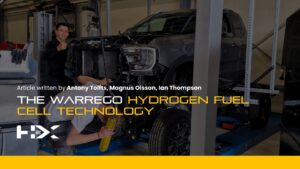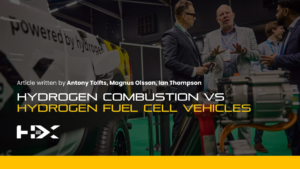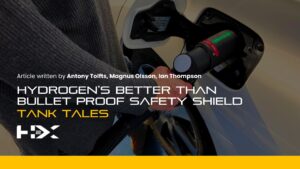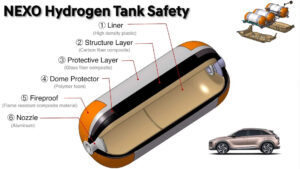In an ambitious move to reframe the capability of Hydrogen powered vehicles, H2X developed the Warrego, a Zero Emission 4×4 Pick-Up / Ute designed to surpass the performance of traditional internal combustion engine (ICE) vehicles. The Warrego is now available for pre-order at https://h2xglobal.com/ .
Engineering Excellence and Strategic Base Selection
H2X’s vision for the Warrego was to deliver a hydrogen-powered vehicle that outperforms traditional ICE vehicles. The goal was to deliver a zero-emission vehicle with all the quality, performance, and load-carrying capacity that drivers have enjoyed from traditional ICE vehicles that have over a century of existing refinement. The project initially focused on the dynamic pick-up / Ute market, applicable to a wide range of commercial and retail drivers.
H2X selected the Ford Ranger as the base vehicle due to its global popularity, reliability, and strong Australian roots, just like H2X. When Ford introduced the latest Ranger model, H2X adopted the updated vehicle and leveraged its enhanced features, styling, and capability. The latest Ranger’s chassis, with increased length and width, updated internal communication standards (CAN/FD instead of CAN/BUS), and the latest technology, provides an even better platform for the Hydrogen powered Warrego, ensuring H2X remains an innovation leader.
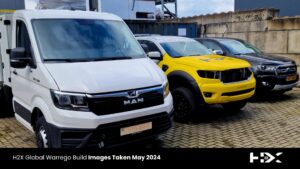
Advanced Fuel Cell Integration
Automotive development involves repeated and precise testing at component, system, and vehicle levels. After extensive testing of different fuel cell systems, electric motors, and inverters, H2X’s data proved that Toyota’s fuel cell was the best for efficiency and performance. This full load-following fuel cell, was initially paired with small Li-ion battery packs, which will be replaced by the latest supercapacitor cells in production models to enhance performance, efficiency, and recyclability.

Performance and Powertrain Optimization
A primary objective for the Warrego was to achieve road speeds and acceleration comparable to the ICE Ford Ranger. H2X’s data-driven approach, led by an industry-leading team, identified a high-performance motor and inverter combination. Warrego drivers enjoy a driving range of 400 km with a top speed usually limited to: 130 km/h and acceleration from 0 to 100 km/h in under 10 seconds. By integrating supercapacitors H2X vehicles can store more power from regenerative braking, particularly useful when you find yourself in stop-start driving.
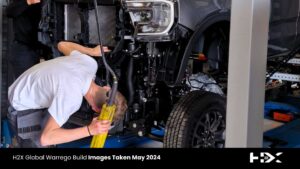
Innovative 4WD Solution and Hydrogen Storage
To maintain the traditional 4WD experience without the complexity and weight, H2X engineered a gearbox connection to seamlessly integrate with the standard 4×4 setup. This allows familiar driving controls to be retained and ensures a smooth transition for users accustomed to ICE vehicles. The hydrogen storage, providing fuel to the fuel cell and ensuring a range of 400 km, is an H2X-designed proprietary technology. Positioned under the bed behind the rear axle, these bulletproof tanks provide a safe and effective energy source with a design that ensures efficient space utilization and optimal weight distribution, maximizing the vehicle’s performance and handling.
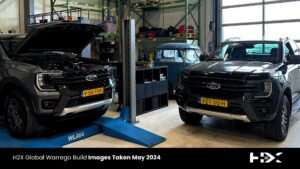
Market-Ready Innovation
The opening for pre-orders of the Warrego marks a significant moment for H2X, offering the market the first Hydrogen powered 4×4. The Warrego delivers a driving and refuelling experience similar to traditional ICE vehicles, allowing Warrego drivers to refuel and continue with minimal disruption. This innovation meets the demands of current pickup truck users and sets a new standard for sustainability and efficiency in the automotive industry.
By introducing the Warrego 4×4 to the market, fleet owners and professional users can now participate in the transition from fossil fuels to zero-emission alternatives, without sacrificing transportation capacity or requiring longer transportation times or additional vehicles due to prolonged electric charging. With fewer moving parts in the fuel cell and powertrain setup, acquiring an H2X product will result in lower maintenance costs and fewer service issues compared to traditional ICE vehicles.

Conclusion
By successfully integrating advanced hydrogen and supercapacitor technology into a widely popular vehicle platform, H2X’s Warrego 4×4 offers a robust product that exceeds contemporary performance standards and consumer expectations with zero emissions.
Open for Pre-Orders
Pre-order your Warrego now at: https://h2xglobal.com/ .

About H2X Global
Zero emissions, extended driving ranges, and 5-minute refuelling times—H2X Fuel Cell Electric Vehicles set the standard for commercial transportation. Offering the world’s only hydrogen-powered 4×4 and a proprietary battery-free power system, H2X drives to the future.
H2X – Improve Earth.
